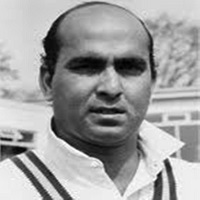Mahmood Hussain was a right-handed Pakistani cricketer who played twenty-seven test matches from 1952-1962. He made an incredible thirty-five in 1961, at New Dehli’s Ferozshah Kotla which rescued Pakistan from failure. This article has all the information about him, including Mahmood Hussain Biography.
| Title | Description |
|---|---|
| Personal | |
| Name: | Mahmood Hussain |
| In Urdu: | محمود حسین |
| Famous As: | Cricketer |
| Nationality: | Pakistani |
| Religion: | Islam |
| Profession: | Cricket |
| Batting : | Right-hand bat |
| Bowling : | Right-arm fast-medium |
| National side : | Pakistan |
| Test debut (cap 12): | 23 October 1952 v India |
| Last Test : | 5 July 1962 v England |
| Major teams: | Quetta |
| Born | |
| Date: | 2 April 1932 |
| Place: | Lahore, Punjab, British India (now Pakistan) |
| Died | |
| Date: | 25 December 1991 |
| Rest Place: | Northwick Park, Middlesex, England |
| Aged: | 59 |
Table of Contents
Mahmood Hussain Biography
Mahmood one of Pakistan’s initial cricket stalwarts, who took sixty wickets in twenty-nine test matches, he was in the hospital for diabetes mellitus treatment. Famous as a ‘great warrior,’ during his cricket career, he kept his courage high in his struggle with the complexities of diabetes.
He made his hometown proud as he assisted Pakistan to gain one historic win after another. People will remember him as a lovable person with a beautiful sense of humor. A personality bigger than life, he’ll be listed among Pakistani cricket’s pioneers.
Mahmood Date of Birth
He was born on 2nd April 1932 in Lahore, British India.
Career
He was one of the renowned sons of Pakistan, undoubtedly the fastest bowler from Pakistan in the 1950’s. With the likes of Khan Mohammed and Fazal Mahmood, he made a strong pace attack. During their period the trio was responsible for the most of Pakistan’s famous Test wins.
Those include victories over West Indies and England among others. Endowed with the potential to swing the hardball at high speeds, he also had injury issues because of the immense workload he had to bear on some of the subcontinent’s most placid surfaces.
Interestingly, he had a warrior attitude and never quit regardless of the tournament condition. He shifted to England because of his business and also spent his remaining life there.
Death
He passed away on 25th December 1991 in NWPH (Northwick Park Hospital).
